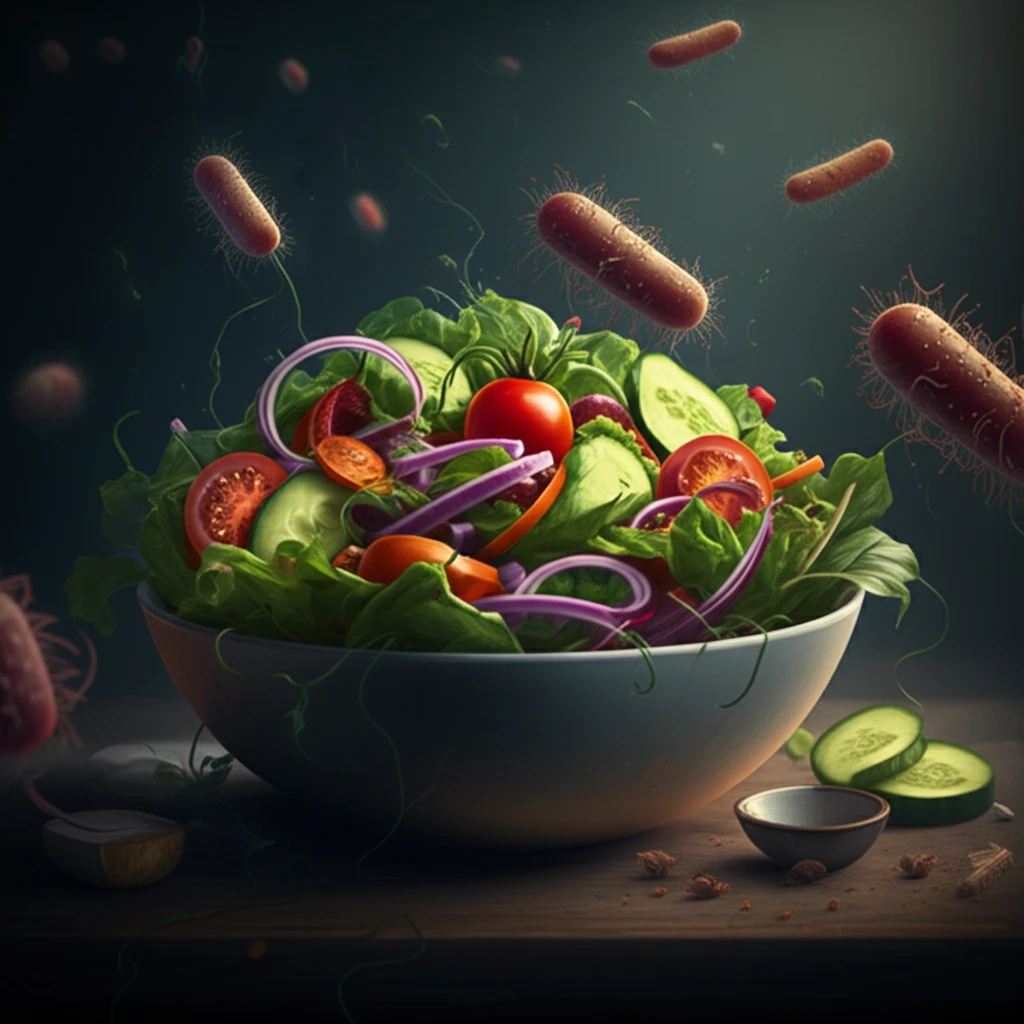
Is Your Salad Safe? Unveiling the Hidden Dangers in Irrigated Vegetables
"A Deep Dive into the alarming levels of bacterial contamination in vegetables irrigated with river water and what it means for your health."
In an era where health and wellness are paramount, the safety of our food supply has never been more critical. We diligently choose fresh produce, aiming to nourish our bodies with nature's bounty. However, a growing concern casts a shadow over the simple act of enjoying a salad: the potential for bacterial contamination in irrigated vegetables. This isn't just about a minor upset stomach; it's about understanding the invisible threats that can compromise our well-being.
Recent research has brought to light some unsettling findings regarding the water used to irrigate crops, particularly in regions where freshwater resources are strained. When rivers and other water sources become contaminated with sewage and industrial waste, the vegetables they nourish can become unwitting carriers of harmful bacteria. This poses a significant risk to public health, turning a seemingly healthy meal into a potential health hazard.
This article delves into the intricate web of factors contributing to bacterial contamination in our vegetables, from the sources of irrigation water to the farming practices that can either mitigate or exacerbate the problem. Our goal is to equip you with the knowledge to make informed choices, protect yourself and your family, and advocate for safer food production practices.
The Dirty Truth: Bacterial Contamination in Vegetables

A groundbreaking study conducted in Ethiopia has revealed alarming levels of bacterial contamination in vegetables irrigated with water from the Awash River. The research focused on commonly consumed leafy greens such as cabbage, lettuce, and spinach, analyzing samples from farms in the Adama region. The findings paint a concerning picture: a significant portion of these vegetables tested positive for high levels of aerobic bacteria, total coliforms, and fecal coliforms.
- Spinach was found to be the most heavily contaminated vegetable in both farms, with aerobic mesophilic bacteria counts reaching as high as 2.2 x 10^9 CFU/g.
- Lettuce samples recorded the highest total coliform count at 6.6 x 10^6.
- All three vegetables exceeded the recommended levels set by the International Commission on Microbiological Specifications for Foods (ICMSF).
Protecting Yourself: What You Can Do
While the findings of this study may seem alarming, there are steps you can take to minimize your risk of exposure to contaminated vegetables. Thoroughly washing your produce under running water can help remove surface bacteria. For leafy greens like lettuce and spinach, consider soaking them in a diluted vinegar solution (1 tablespoon of vinegar per cup of water) for a few minutes before rinsing. Peeling vegetables, when practical, can also remove a layer of potential contamination. Cooking vegetables is very effective way to kill Bacteria. Support farmers who prioritize responsible water management. By staying informed, taking precautions, and advocating for change, you can play a part in creating a safer and healthier food system for all.
